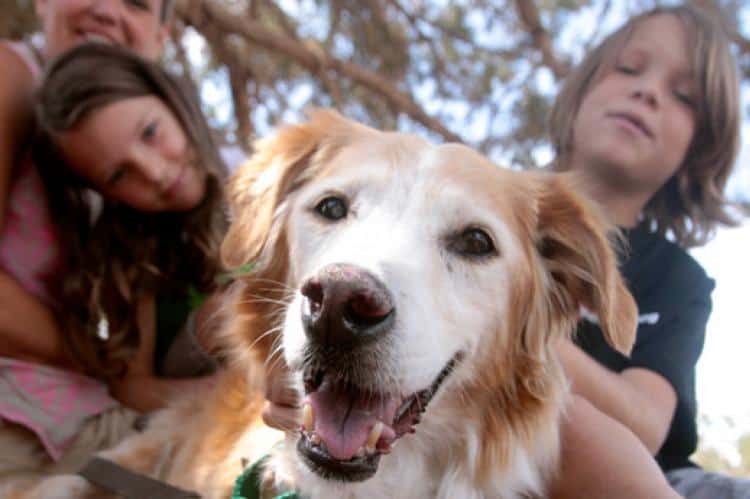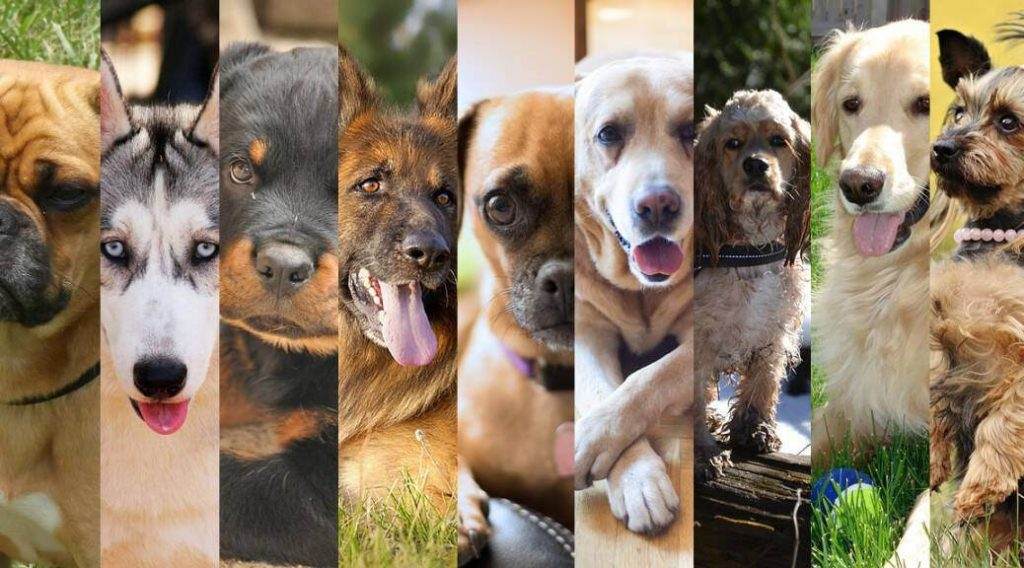When it comes to the safety of kids around dogs, the key point to note is that you should teach both your dog and kids about various situations. The kids should not be going near aggressive dogs.
The dog in your home should also know to maintain some distance from kids and especially from new borns. While barking is ok but biting by a dog can cause serious problems.
Safety should be your priority as a dog-loving parent. Even if you have trained your pet not to be a bite, still you should be cautious about leaving your children with him without supervision.
Many people wrongly assume that kids should learn how to act with these furry friends. But that isn’t always the case. Because some don’t actually have a dog which means they have little or no interaction at all. While others, don’t want to follow the rules.
If your child is drawn to dogs, it’s your duty as a parent to ensure that you provide proper tools and behavior training that’ll keep them safe when playing with their pets. And again, you should also train the puppy to handle kids.
We’re going to address something that’s a little bit different than things we’ve done before. So every night after training, we’ll go hang out in the agility arena, we’ll talk about dog training.
We’ll train our own dogs, maybe run some of the agility courses. But something interesting happened a couple of weeks ago and I wanted to share that with you.
When we brought Siri (our dog) over, my daughter very clearly asked me if she could pet Siri. And we think that’s a really really a good thing for kids to remember. A lot of kids get really comfortable because they may have a dog at home.
They may just assume their dog at home would be just as friendly or just as comfortable with them approaching the dog.
Why Dogs Bite Kids?
Many reasons could make the dog bite, which includes:
- Disturbance when eating
- Irritations caused by putting your face into a dog’s face
- Being bugged when they are asleep or resting
- Being handled roughly
How to Prevent Dogs from Biting Children
If a dog bites an adult, it’s most probably because of fear or out of aggression. But when he bites a child, well it may be out of fear and aggression as well, but it is a warning bite. Mostly, he’ll bite the kid on the face or the hand. It may not be that serious, but it’ll traumatize the little one.
Any dog bite is extremely serious. But it’s essential that you distinguish between the nature of the bite to avoid future problems. Often, a dominant dog becomes unhappy with a subordinate one. To express his lack of happiness, he’ll use multiple positions.
But after giving out the signals and the subordinate dog doesn’t stop, the dominant one will growl and bare his teeth, and he might snarl and quick bite the subordinate one.
This bite is not to injure the subordinate dog but rather to send a stern warning and punishment. And this is the same scenario that happens when children are bitten.
Children can however not interpret the dog’s language. Therefore, in case of any bite, the parent should be blamed for lack of responsibility.
But the puppy also takes his fair share of the blame since he is very capable of learning to control his behavior and not bite.
If a kid is bitten, the wound should be thoroughly cleaned and depending on how severe the bite is, medical attention can be sought.

So we have things that we think all kids should know about meeting and greeting dogs.
#1 Buy the Right Dog Depending on Your Family
All dogs aren’t right for children, and not all kids are right for a dog. Most of the dog-child problems being reported today involve kids below six years of age.
If your young one is under six, it’s essential that you invest a lot of time and thought before choosing a new puppy.
You should completely avoid large dogs that have been trained as guards or those that are aggressive. It is also wise that you avoid high energy ones or those that bark excessively.
Parents who have small children are very busy. So, they could lack the time for grooming or walking their dogs. When puppies are new, they require the same attention as a child does.
So before quickly buying a pet, ensure that you are ready to bring a new puppy into a home that’s already busy.
The mistake that most individuals make is that they buy a puppy because they think he is “good for the kids” or just because the children wanted him, but the parent wasn’t much into the idea.
If you are not sure of whether you are ready to care and train a new puppy, we advise that you don’t buy him yet, as you’ll be unfair to him and the people around.
When kids reach seven years and above, they are prepared to build a beneficial relationship with a dog. Just look at the joy of an eight-year-old when he or she holds their new puppy in their arms for the very first time. Dogs are the most helpful of pets.
They can teach a child to learn to be responsible, patience, empathetic and compassionate. But since no young one is 100% capable of training or caring for a puppy, the parents are therefore obligated to take full responsibility for the pet.

#2 Newborn Baby and Dog Hygiene
It’s rare for infections to be transmitted from dogs to humans and vice versa. But when it comes to small kids, there are some considerations. Of course, all dogs around children should be vaccinated for rabies.
If you have one that happens not to have a valid dog vaccination certificate and he bites a child, then prepare yourself for expensive and legal consequences. Contact the local county nurse for any queries concerning rabies vaccination status of the dog.
Also, remember that fleas and ticks can travel from dogs to children. It’s therefore imperative that you protect a dog with a flea and tick preventative such as topicals which can be applied externally once a month. You should also keep dogs away from the kids sleeping areas to avoid allergies.
#3 How to Introduce a Dog to Baby
Once the dog moves in from the breeder or shelter, he will need some time to adjust to his new life. It’s crucial that you talk with your child about how they’re going to make the pet feel at home. Children should, therefore:
Give the dog some space- too much excitement can overwhelm him.
Allow the dog to initiate the interaction- sometimes he may be shy and nervous, you should, therefore, teach your children patience.
And even most importantly, parents need to explain to their children to avoid certain behaviors which could cause stress and injury to both the puppy and the children. Here is what your kids should avoid doing.
- Squeezing and hugging the dog: It may be a sign of affection but a new puppy might not perceive it that way, and in some cases, he might feel threatened.
- Teasing the dog: Children should not poke or blow or tease the pet, it’s unkind and can cause him to retaliate.
- Running or shouting: Running provokes the dog to chase and bite.
Psychological effects of a dog bite tend to have a worse impact than the physical. It’s best that you prevent this by teaching your children and the puppy how to interact. You shouldn’t ever leave a small kid and a dog unattended.

#4 Always Ask Permission
Whether it’s asking permission of the owner or their own parents. Maybe if the kids are under 10, they might ask permission from their parents. In that case, it’s best if the parent were to go up and maybe say hello to the dog first. Just to make sure things are okay. But it is really important that the kids ask permission.
#5 Kids Behavior With Dog
It’s really important that kids understand that you can’t just walk up to a dog and put your hand over their head and start petting them on the head. The safest thing for a kid to do is to approach a dog, maybe offer them the back of their hand, below the plane of the dog’s nose.
It is important for them to be never standing over top of the dog. But maybe approach from the side and petting the dog on its side is the safest way.
Remember a really wiggly dog can quickly become a biting dog because they get really stimulated. Some dogs get really excited by kids and the giggling and all the high-pitched sounds. Dogs can sort of getting too excited about greeting kids and it can turn into an event where they may get nipped.
It is also a good thing to have the kids offer some delicious food to the dogs to build up that relationship. Dog love cupcakes. Use the dog cupcake recipe to make some tasty treats for the dog and have them served by the kids.
#6 What to do If a Dog Randomly Comes Up to Them
Maybe, you know, somebody at the park has their dog off-leash, the dog runs over to your child. Whether the dog is friendly or not, a similar reaction as in the second point above is the safest thing. The best thing for a kid to do if a dog approaches them is to stand quietly and calmly.
Keep their hands at their side or even just put their hands crossed. And the best thing to do is to actually turn around, and put their back to the dog.
When I was a little kid, my dad taught me that if I was riding a bike it was a good idea for me to get off my bike and put the bike between myself and the dog, just as a bit of protection.
Most than not, the dog is probably running over because they think the kid’s cute and making lots of noise and is excited. But you just never know and its best to have really good control of the situation before letting kids interact with dogs, especially if you don’t know them.
#7 Never Approach a Dog Who is Tied Up
You know there are lots of scenarios where maybe a dog is tied up in the backyard, or outside of a store. Sometimes you see people tie their dog up to a bike rack or something like that. It’s really important that kids don’t approach those dogs.
The dog can really feel vulnerable at those times, and you know a kid approaching may be just a little bit too concerning for a dog. It’s never a safe scenario for a child to approach a dog that’s tied up. I think the dogs sort of getting in a situation where they get into a fight.
Hope this article on getting dogs and babies stay together was helpful to you and the tips given here can be applied by our readers in their daily life. You may also read about clicker training essentials for other ways to teach good behavior to the dog.
References
- https://researchcommons.waikato.ac.nz/handle/10289/931
- https://link.springer.com/article/10.1007/s10643-008-0272-1
Table of Contents
